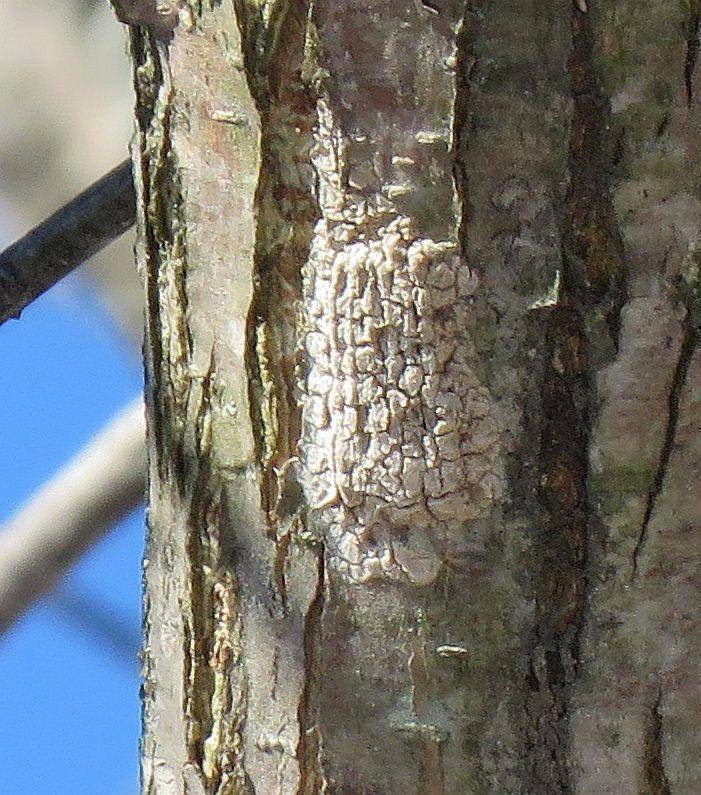- Massachusetts Department of Agricultural Resources
Media Contact
Troy Wall, Communications Director

BOSTON — The Massachusetts Department of Agricultural Resources (MDAR) is asking the public to keep an eye out for the invasive pest known as spotted lanternfly (Lycorma delicatula) during the spring planting season due to the risk of egg masses being accidentally brought in on shipments of trees imported from other states. MDAR recently received reports that nursery stock from SLF-infested areas may have been sent to Massachusetts growers. Due to this, anyone who has recently purchased trees or shrubs or had them planted on their property, particularly maple or crabapple trees, is being asked to inspect the trunk and branches to ensure there are no SLF egg masses or any hitchhiking nymphs, and to report any finds to MDAR. Landscapers and plant nurseries are also being reminded to stay on the lookout for this pest.
“Spotted lanternfly is a tricky pest to deal with, because it can be so challenging to detect before it becomes established,” said MDAR Commissioner John Lebeaux. “With the potential impact of this pest on grape and hop growers, as well as pick-your-own orchards and other parts of the agritourism industry, we are asking anyone with newly planted trees to check them for signs of SLF and to report it if they find it, so that we can limit the spread of this pest in our state.”
In addition to the agricultural impacts it causes, spotted lanternfly has the potential to negatively impact outdoor activities due to the swarming behavior of this pest when the adults appear in the late summer. SLF egg masses are about an inch and a half long, and are flat and gray in color, making them difficult to detect, especially on tree bark. Because of this, any SLF may not be noticed until the nymphs hatch at the end of May or the start of June. The public is asked to look for small black insects marked with white dots. If grapes or tree-of-heaven are in the area, they will migrate to those plants.
Spotted lanternfly is a sap-feeding insect that has caused significant impacts to vineyards, orchards, and other agricultural commodities in states where it has become established. SLF not only harms grapevines, maples, hops, blueberries, and over 100 other host plants, but has been observed to impact outdoor recreation in other states where populations are high and adult lanternflies swarm in large numbers during mating season. If you see any signs of spotted lanternfly, please report it to MDAR at https://massnrc.org/pests/slf.
###
